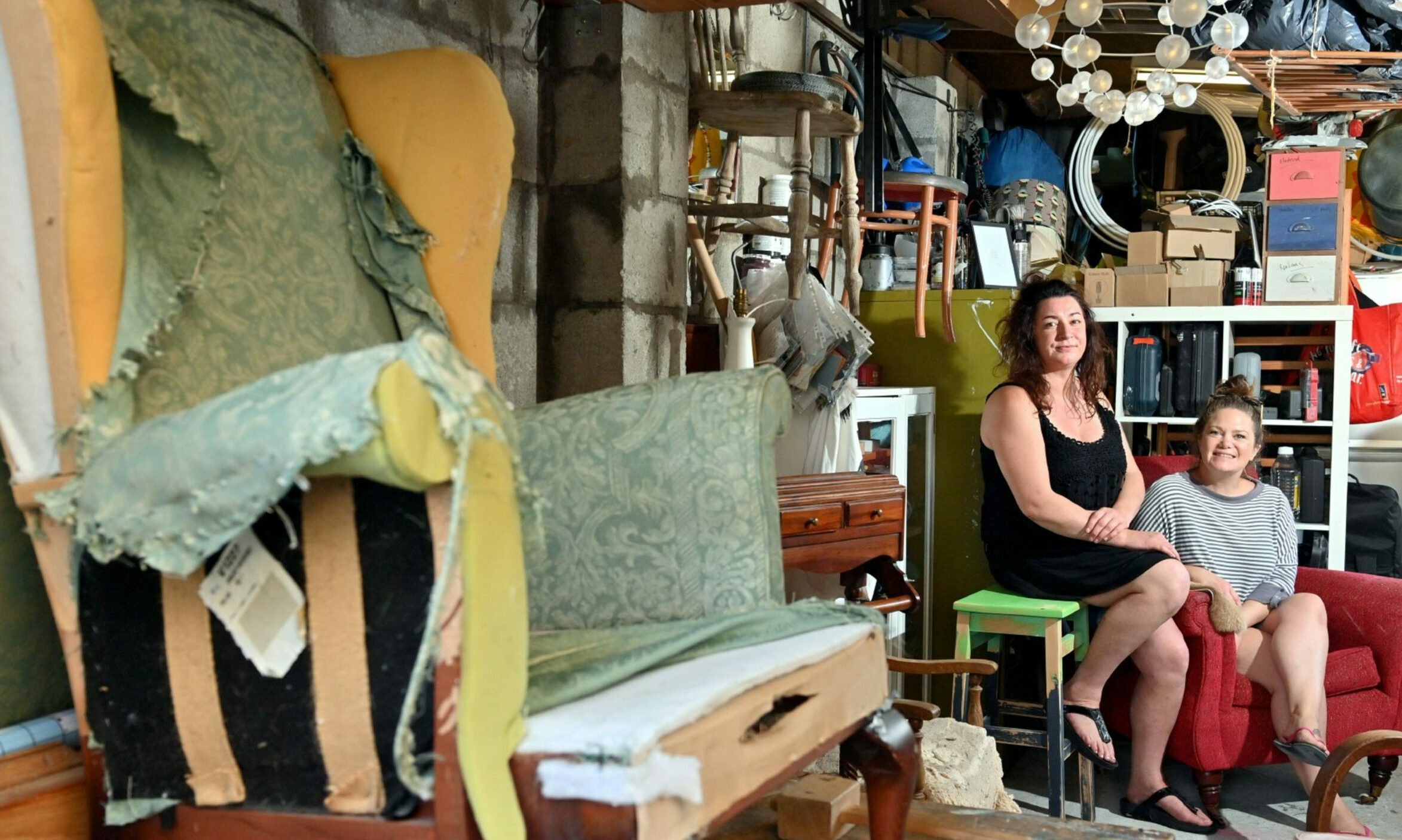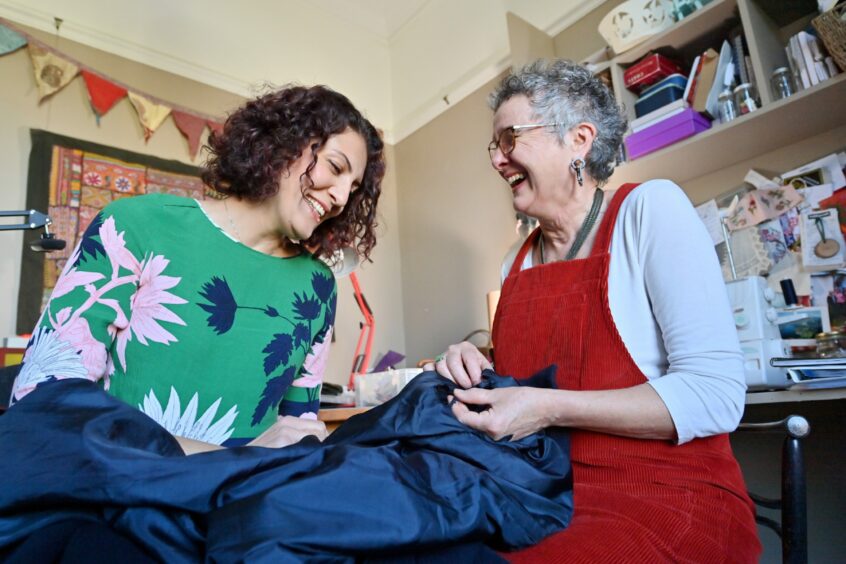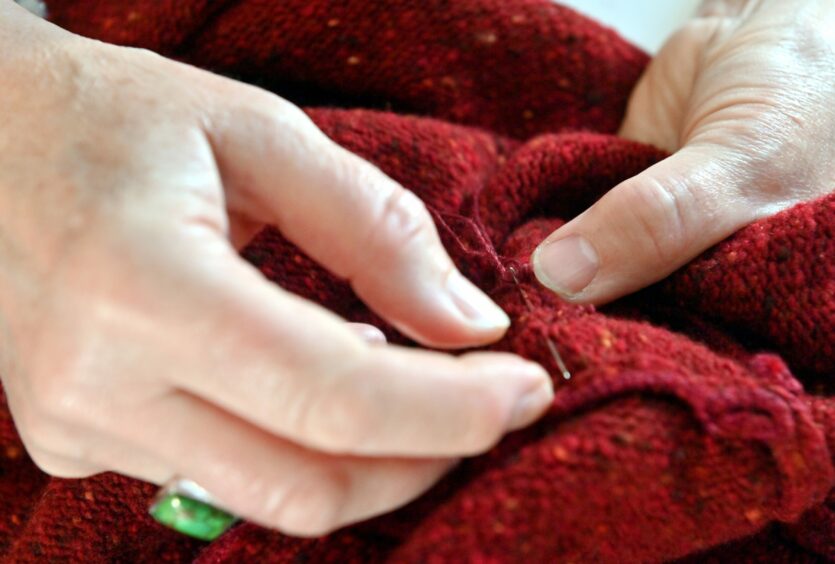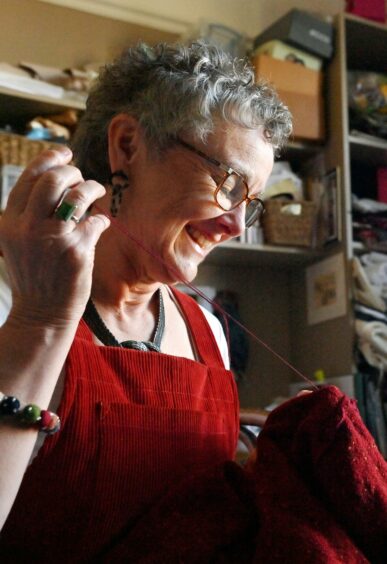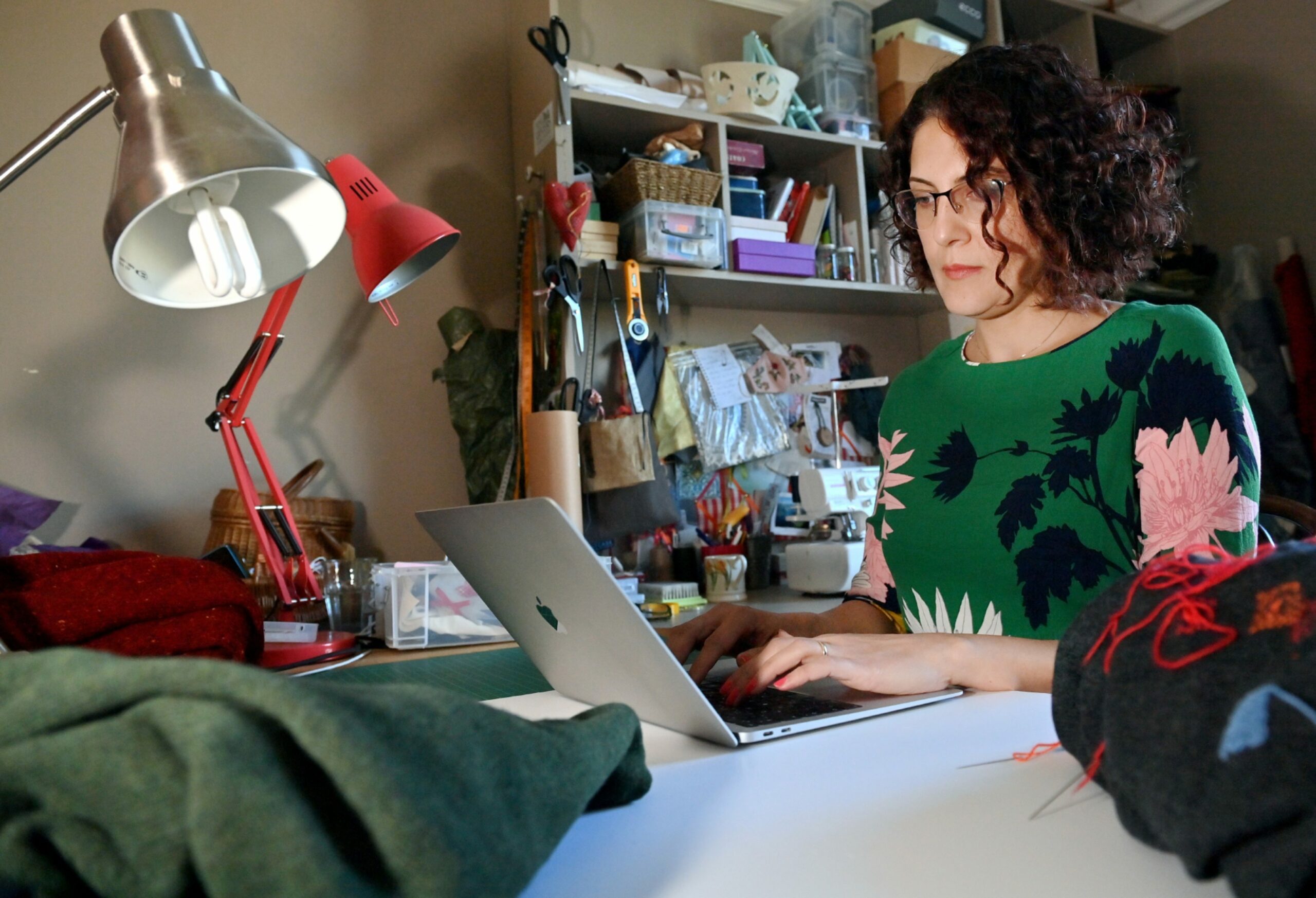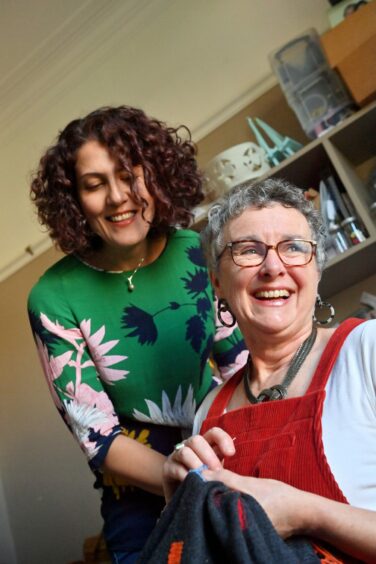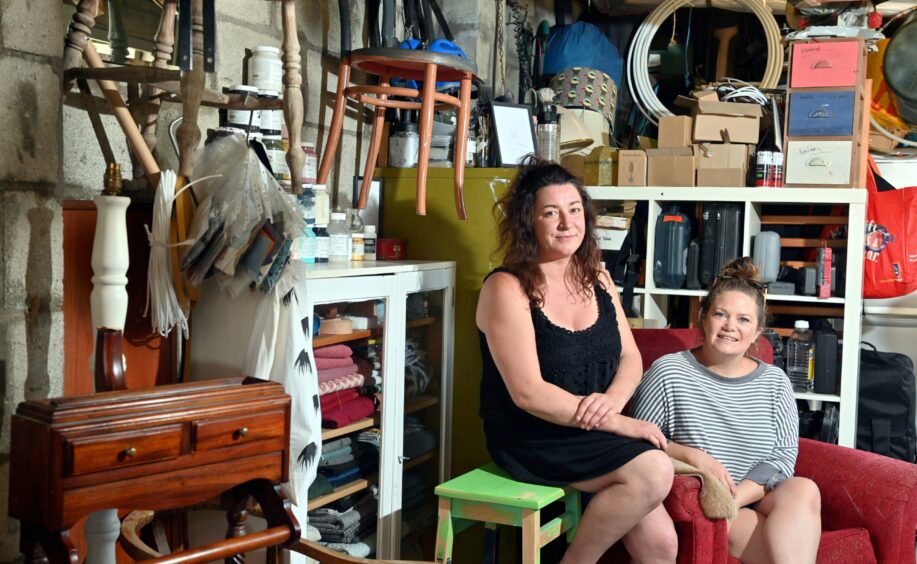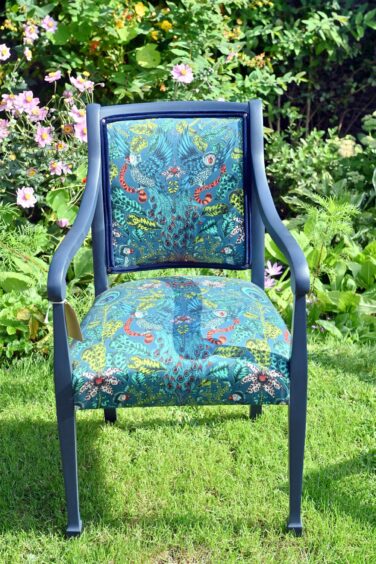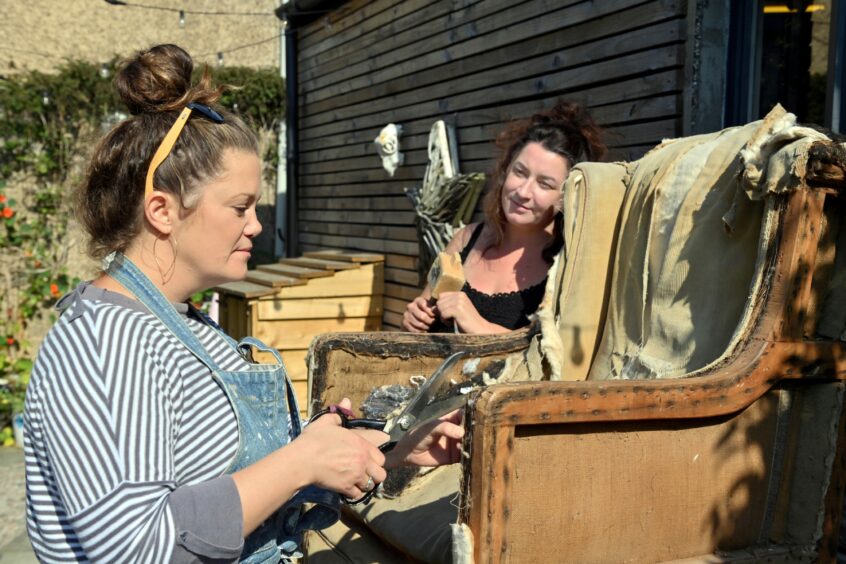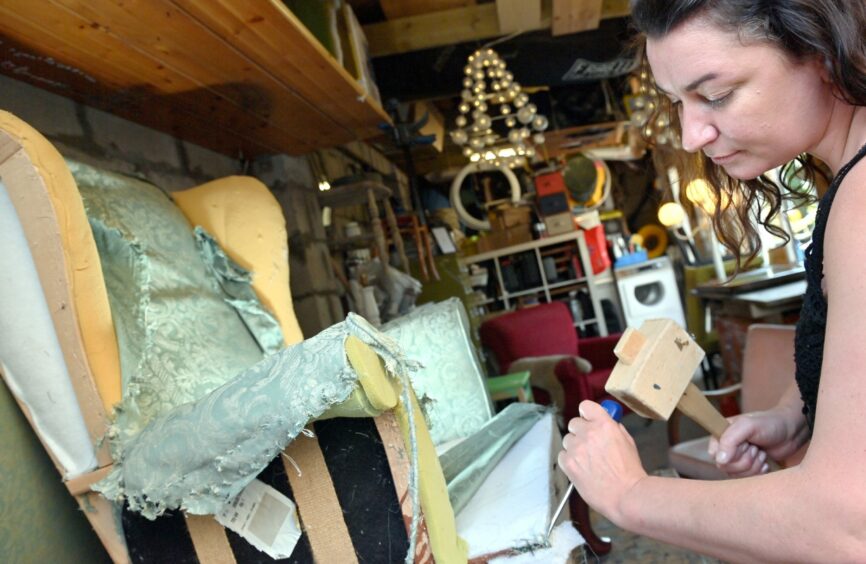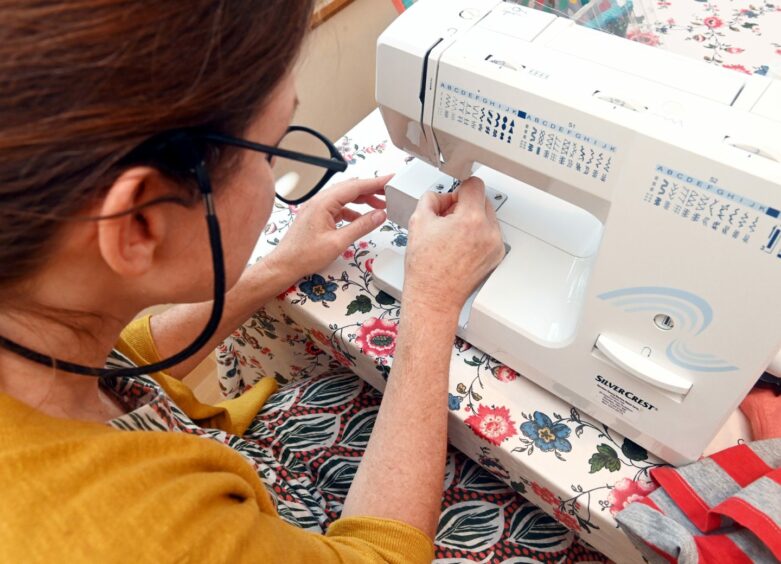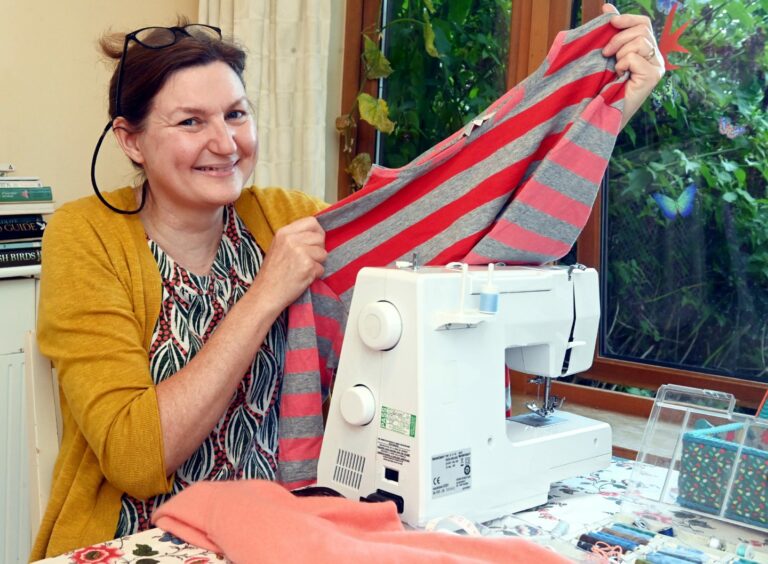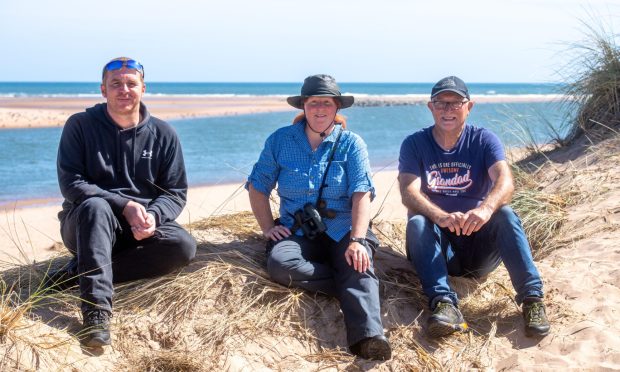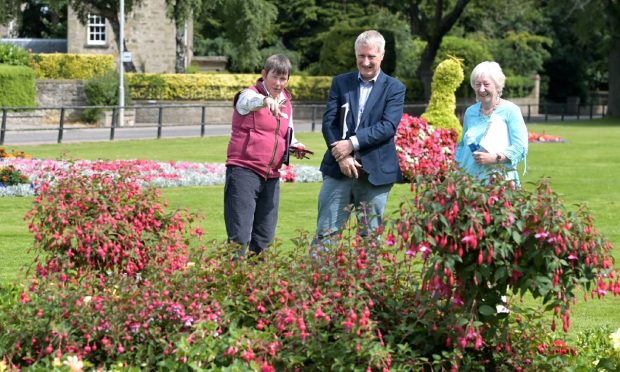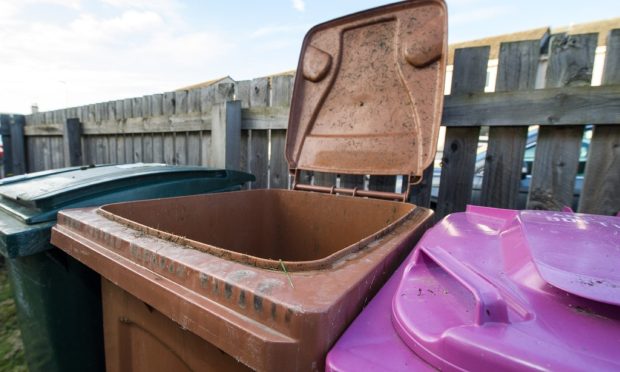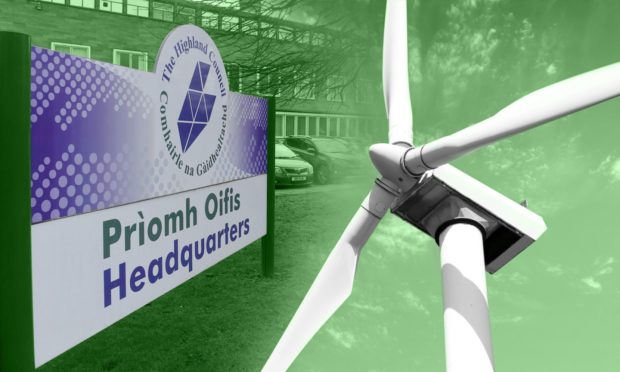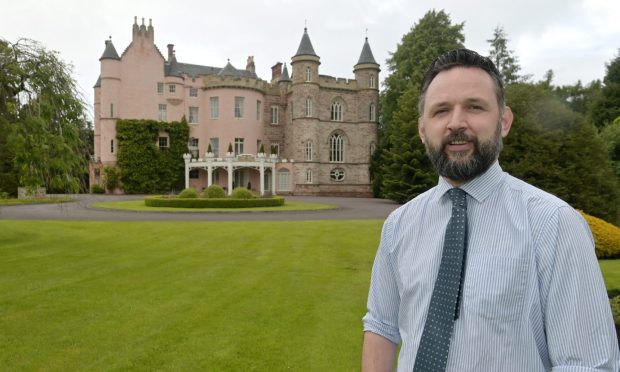Ros Studd and Elahe Alavi are a stylish pair, perched at a window seat table in Aberdeen’s Foodstory – with a pot of peppermint tea.
Ros is swathed in colour, and Elahe wears a simple black T-shirt with a fashionable blazer hung neatly on the back of her chair.
There’s not much the two women don’t know about clothes, but we’re not here to talk designer labels.
The two determined mums have their sights set firmly on something altogether more solid and sustainable, something which could make a difference to the next generation.
It’s not the path you might expect for a former retail buyer and a graphic designer, but it stands as a personal response to climate change and austerity.
For Ros and Elahe are the brains behind Repair What You Wear, a free-to-access website which teaches anyone and everyone how to mend their own clothes.
No expensive sewing machine is required, and there’s a wide range of tutorials from basic mending skills to uniform fixes.
Fashion generates 10% of global emissions, and an estimated £140 million worth of used clothing goes to landfill in the UK each year.
With those sobering statistics in mind, Ros and Elahe believe mending can not only save you money, but the simple act of picking up a needle and thread can now be considered an eco action.
Elahe, who grew up in Iran, was already used to a culture of repair, and can recall a small alteration shop in every neighbourhood.
Yet in the UK, 60% of parents would rather throw away a school uniform than attempt to mend it.
When did we stop learning basic skills, such as how to sew on a button or mend a zip – when our grandmothers could easily turn their hand to such matters?
The rise in fast fashion and a changing curriculum in school could be partly to blame, but it’s not just Elahe and Ros who are fighting back.
The rise of shows such as The Repair Shop, which sees talented craftsmen bring new life to forgotten items, means upcycling has taken off.
And with COP26 set to be held in Glasgow next month, there could not be a better time to find out about the return of mend and make do.
Ros Studd and Elahe Alavri of Repair What You Wear
For these two talented women, their mantra is not about making do or going without. It’s a much deeper message, one which they are now set to take into schools.
“If you can chop an onion, you can sew on a button,” says Elahe, matter of fact.
Elahe was brought up in a culture of caring for clothes, as opposed to simply throwing away and buying new.
Having lived in the US before moving to the north-east, she admits to being shocked at people’s attitudes towards clothes and the planet.
“So in Iran, the culture of repair is really strong there,” she says.
“It’s something I grew up with, so I was shocked by the amount of clothing which people buy.
It’s amazing to see that the culture is growing here though. Teenagers are concerned about the planet, they are looking for ways to help.
“There is a young professional workforce wearing almost entirely second-hand clothes.
“Repair What You Wear exists so that everyone can use a needle and thread. We try to show that it is actually easy, especially when you get used to it.
“You can make things last forever.”
Ros and Elahe now want to encourage people to have the confidence to set up their own mending groups, with mentoring sessions on offer for those who want them.
“This is about education,” says Ros, who asked Elahe to come on board.
“We want people to use their own skills, pass on their skills and embed their skills.
“We’re getting a few more male followers online, in part thanks to a company called Rerun.
“They specialise in prolonging the life of running clothes. One of the repairs I’m most proud of is my running leggings, after I fell over and got a hole in them.
“Our video on how to repair a small hole in running shoes, which can take less than five minutes, was really popular.
“And our tutorial on how to repair small holes in jumpers got 30,000 views.
I think mending is on the rise for quite a few reasons. Partly because of need. People have realised they don’t need as much.
“There’s the huge environmental reasons, and then there’s financial pressure.
“But people can also think that mending isn’t worth it. And if you don’t have the skill, that one item can just haunt you from the wardrobe.
“That’s why we’re here. People knew how to fix clothes up until the last 30 years, and clothes are not disposable.”
Ros is currently a fashion and textiles lecturer at Gray’s School of Art, but started off her career as a retail buyer and product developer for some of the biggest names in fashion.
“I really loved it, and I regularly went on work trips to India,” says Ros.
“It must have been around my fifth visit, and globalisation was creeping in.
“One person had travelled 36 hours to show me their products, and I couldn’t buy them.
“I remember thinking to myself, I want no part in this.”
Ros went on to work for charities, before retraining as a lecturer.
The idea for Repair What You Wear was sparked when she started mending her children’s clothes, but realised others may not have the skill to do so.
“Our videos can help people learn to mend in their own time, as if you are being shown by your aunt or granny,” says Ros.
When you start learning about clothes, you can learn how to fix them. You can mend around 80% of your clothing versus buying them, wearing them and binning them, which is hugely damaging.
Ros and Elahe recently held an event in partnership with Amanda Fullerton, of Swish Swish Bish, who runs a clothes swap shop to help fight fast fashion.
Their last “Swishing and Fixing” event saw people swap clothes, learn repair skills and ask questions, and it will now become a monthly fixture
Alongside taking their skills out into the community, Ros and Elahe have already started to work with schools.
Their project, called Fashion and the Environment, offers numerous resources to match the Scottish, Welsh, English and Northern Irish curriculum.
“The project is based on repurposing an existing garment, learning more about fashion and the environment, more about the major fibres used in clothing (cotton and synthetics) and core hand skills that can also be used for mending,” says Ros.
“We need to be everywhere, and for pupils to learn about fibres.
“Fibres are the root, what do you really know about your clothes? This goes well beyond mending something, this is the legacy.”
Amy Sawers and Ali Dickie, founders of Flock Home
Where do you go when you want to spruce up your living room, or create a one-off look?
And what do you do with the old and tired furniture, which you think has seen better days?
Well thanks to two talented women in Stonehaven, there’s no need to waste your money buying new, or more importantly, add to landfill with the cast-offs.
Amy Sawers and Ali Dickie are the founders of Flock Home, and have upcycled hundreds of pieces of furniture since they went into business five years ago – after a chance meeting brought them together.
Using a garage as their studio space, their par have branched out into running successful pop-up shops.
From reupholstering a chair dating back to 1933, or giving a traditional bureau some TLC, there’s not much Ali and Amy can’t turn their hand to.
“My parents did up old houses, so my childhood was spent scraping walls,” says Amy.
“I’ve always loved old things, and slowly word got out about our work.”
Ali studied fashion and textiles at university, and believes her heart has always belonged to the world of interiors.
“When I look at a piece, I always think to myself, what can I do?” she says.
“I can make it look pretty.
“I love the transformation, it is like art. It is a creative process.
“The difference that paint can make is unbelievable.
One of the wonderful things about old furniture is that it is really well made. So once we’ve finished with something, it could last you another 60/70 years.
The key to a successful upcycling project lies in the prep work, and Amy and Ali quite often strip a much loved armchair back to bare bones.
They’ve worked on everything, from one little foot stool to grand wardrobes.
“When it comes to reupholstery, you take the fabric off and you don’t know what will be underneath,” says Ali.
“That can be scary. But if that chair belonged to your granny, then it is worth something to you.
“We like to be honest with people, we will always tell them if for the time, effort and money, they could just go out and buy a new chair.
“But that’s not really the point, it’s the sentimental value.
“You can get attached; we’ve got a unit at home called Harriet.
Modern furniture is not built sustainably on purpose. It’s not built to be reupholstered.
Amy and Ali get their stock from a variety of places, ranging from charity shops and auctions to Facebook Marketplace.
“It’s very satisfying, to create something completely unique,” says Amy.
“If you take a well designed piece of furniture, well the design is there in the first place.”
Ruth Bone, Hatton Repair Cafe
If you want the Aberdeenshire answer to popular TV series The Repair Shop, well here it is.
Founder of Hatton Repair Cafe, Ruth Bone is quick to shrug off the comparison, and says the work carried out in a humble village hall near Peterhead isn’t quite as grand.
But that doesn’t mean that the project isn’t making a difference, and Ruth hopes it will get up and running again following the pandemic.
The pupil support assistant was inspired to take action after seeing a similar project on TV, and asked her friends if they wanted to become involved.
“I think there is about eight of us who volunteer,” says Ruth.
“I think every village should have a repair cafe.
“My own skills are very basic. I can sew on a button, take up a hem or repair a little tear.
“I hate things going into landfill, that’s my prime motivation.
I want to open people’s eyes to the possibility of mending things, instead of throwing out and buying new.
“There’s the raw ingredients, the shipping and processing. Then there’s the human cost, of cheap labour exploited at some point in the chain.”
Ruth saw first-hand the damage that landfills can have on the environment, due to her previous job as a ranger for Aberdeen City Council.
“One of the sites we used to walk on was Tullos Hill, which is an old landfill site,” says Ruth.
“It hasn’t been used for landfill for a very long time, but rubbish was still coming to the surface.
Litter might be out of sight, but it doesn’t go away. I don’t want to live in a world where there are more and more landfill sites.
One of the most impressive repairs at Hatton Repair Cafe was that of an old radio, which was restored to perfect working order thanks to the efforts of a heating engineer.
“It belonged to the grandfather of one of our customers, and we got it working again,” says Ruth.
“I think the mending culture is making a return, more companies are offering a repair service these days.
“I’m 50, and my mum’s generation would have made their own clothes.
“If you spent hours making your own dress and it got a little hole in it, you’d be more inclined to mend it.
“The repair café is a way of bringing the community together. It’s keeping things out of landfill, restoring them to use and passing on skills.”
